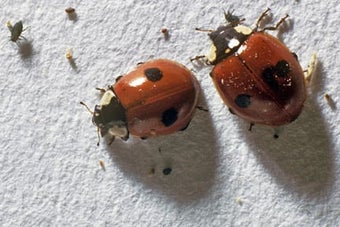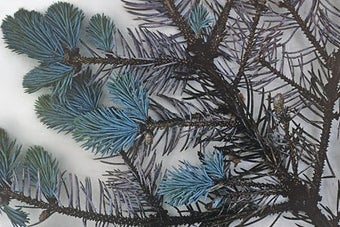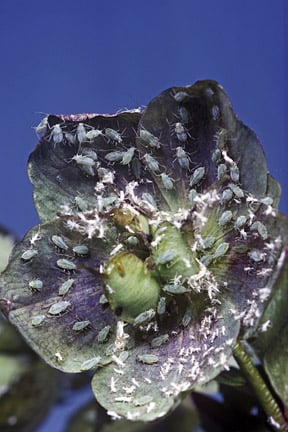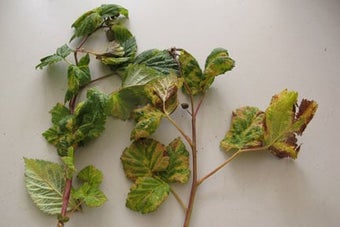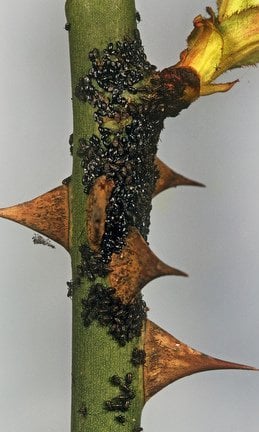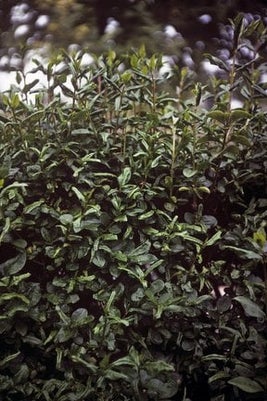
Quick facts
Common name - Privet aphid
Scientific name - Myzus ligustri
Plants affected - Privet (Ligustrum)
Main symptoms - Leaf curling and distortion
Caused by - Sap-sucking aphids
Timing - Spring-summer
What is privet aphid?
The privet aphid is a small (1.5 mm) greenish yellow aphid that only feeds on privet (Ligustrum).
Aphids are -sucking true bugs and are an important part of many food chains, supporting many predators . They range in size from 1 to 7 mm (¼ in or less) long. Some aphids are known as greenfly or blackfly, but there are species that are yellow, pink, white or mottled. There are more than 500 aphid species in Britain. Some feed on only one or two plant species, but others can be found on a wide range of plant hosts. Almost any plant can be affected, including ornamentals, vegetables, fruits, greenhouse plants and houseplants. More information on aphids .
Symptoms
Privet aphid is active during the spring and early summer, when its -feeding activities cause the leaves to yellow and curl. Damage is typically minor and can be tolerated. Plants usually make a recovery later in the summer when the aphids are no longer active on the plant.
Management
Aphids form the basis of many food chains and it is not unusual to have some of these animals in a healthy balanced garden ecosystem. On , aphids can usually be considered part of the they support, natural enemies will normally reduce numbers during summer. While the damage privet aphid causes can be unsightly, damage is often minor, plants normally recover and may not be affected every year and so control is often unnecessary.
- Where possible tolerate populations of aphids
- Check privet frequently from spring onwards so action can be taken before a damaging population has developed
- Use finger and thumb to squash aphid colonies where practical
- Encourage aphid predators in the garden, such as ladybirds , ground beetles , hoverflies, parasitoid wasps and earwigs . Be aware that in spring aphid populations often build up before natural enemies are active in sufficient numbers and then give good control
Biology
Privet aphid, Myzus ligustri, is found throughout the year on privet (Ligustrum species). Sexual forms are produced in November and lay eggs. The eggs hatch in spring and colonies develop on the leaves, reaching a peak in mid-summer.

